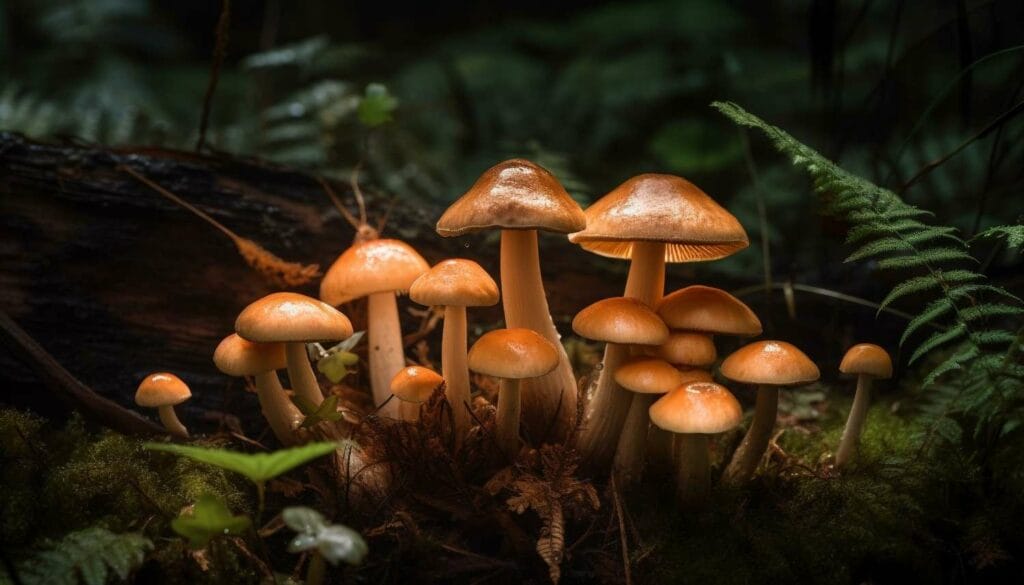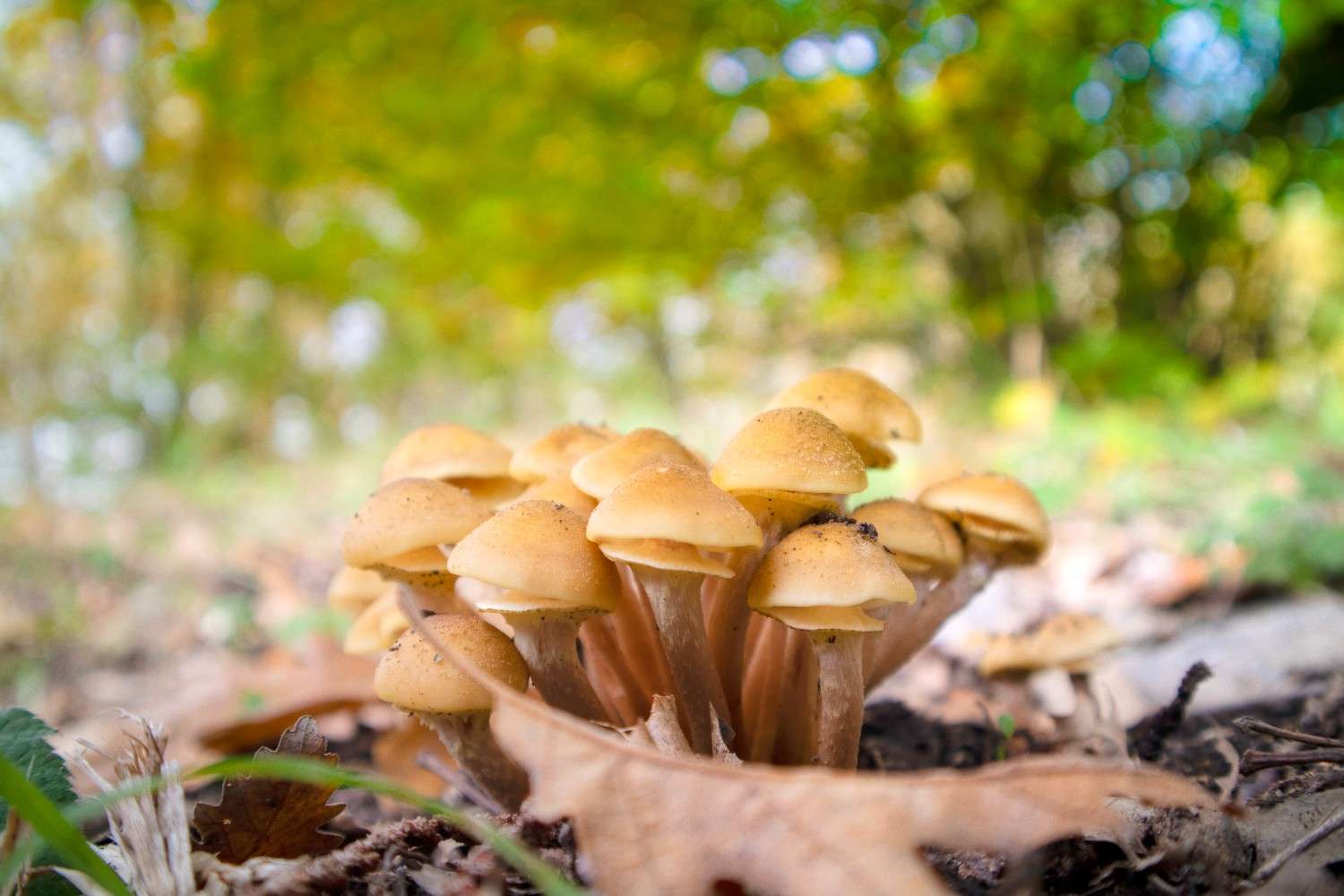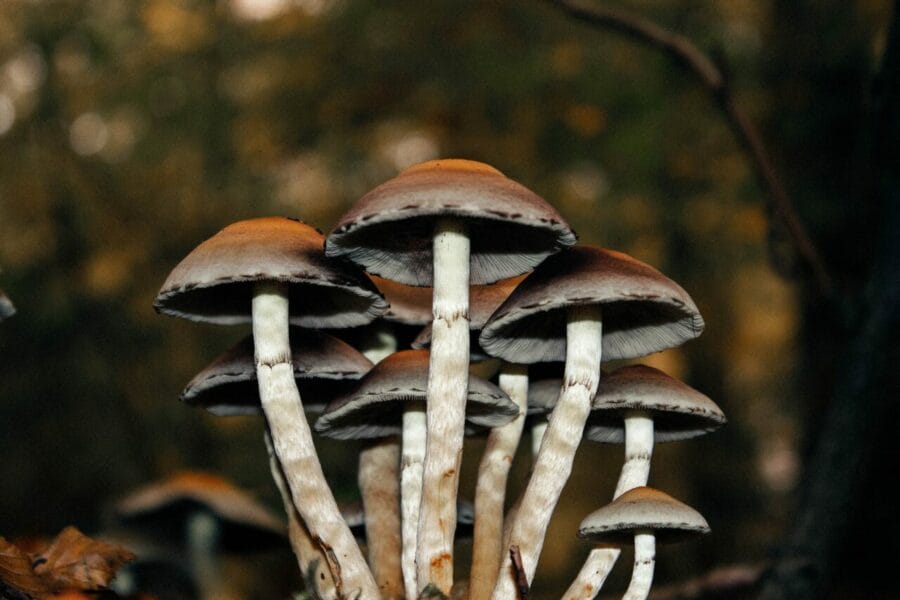Shrooms Canada has come under the spotlight, drawing significant investments for its potential medicinal uses, fueling scientific research, and promoting increased public acceptance.
Two contemporary researches highlight the prominence of psilocybin mushrooms as a widely consumed psychoactive substance.
Eric Leas, an epidemiologist at the University of California, San Diego, noted a 1,250% surge in microdosing-related internet searches since 2015, with psilocybin overtaking LSD in 2019. Additionally, a study by the RAND Corporation indicates that about 3% of Americans – approximately 8 million adults – have used psilocybin in the past year, making it the most popular hallucinogen in 2023.
Let’s explore the global fascination with shrooms.
[toc]
Understanding Microdosing
Psychedelic microdosing involves consuming a small amount of a hallucinogenic substance to achieve a positive mental effect without undergoing a full psychedelic experience. This generally involves taking only 10-20% of a dose that would provoke a psychoactive response. The intention is to ingest an insignificant quantity of a psychedelic substance that doesn’t dramatically alter consciousness.
Historically, microdoses of magic mushrooms and peyote have been used to ease physical symptoms and enhance wellbeing. During the 1960s, the microdosing trend expanded to include LSD as people aimed to boost cognitive performance and creativity.
Currently, microdosing also includes substances like MDMA, Ritalin, cannabis, and ketamine, which can cause hallucinations at larger doses but do not initiate a psychedelic event when microdosed.
Comparing Microdosing and Full Dose Experiences
| Aspect | Microdosing | Full Dose (Psychedelic) |
| Dosage | 0.1 to 0.3 grams of dried mushrooms | 1 to 3 grams or more of dried mushrooms |
| Frequency | Regular (e.g., every few days) | Occasional |
| Duration of Effects | Brief disruption to regular activities | Altered state persists for 4-6 hours |
| Sensory Impact | Experiencing hallucinations (altered or non-existent sensory perceptions), intensified emotions and sensory experiences (brighter colors, amplified sounds), and synesthesia (such as “seeing” sounds or “hearing” colors) | Minor sensory alterations, subtle mood and perception improvements, and enhanced concentration and creativity |
| Physical Impact | Minimal to no physical effects | Increased energy and heart rate, and sensations of nausea |
The Rise of Psilocybin Microdosing
Approximately half of the people who used psilocybin in the previous year chose to microdose, a practice that’s gaining traction among tech professionals and suburban mothers. Microdosing involves taking 1/10 to 1/20 of a full dose. The majority of microdosers consume psilocybin only once or twice a year, with a mere 11% using it more than six times. Over half favor whole or dried mushrooms, while others opt for processed forms like chocolate bars or teas.
The growing interest in microdosing is tied to changing laws surrounding cannabis and psychedelics. States like Oregon and Colorado, where plant-derived psychedelics have been decriminalized, show the greatest interest in microdosing.
Research suggests an increase in psilocybin use, especially in nightlife settings, where it competes with drugs like ecstasy and ketamine. A study estimated that 5.5 million adults used hallucinogens in 2019, with a significant surge in LSD use.
Key Reasons Behind the Growing Microdosing Trend
The RAND survey revealed the top three reasons why Canadians use psilocybin:
Enjoyment and Social Interaction
Many Canadians use these hallucinogenic mushrooms for pleasure, seeking a unique collective experience. The community aspect of consuming psilocybin at group events or social gatherings adds to its appeal.
Mental Health
A significant number of users turn to psilocybin for its potential mental health benefits. In fact, an observational study in Nature-Scientific Reports Trusted Source suggests that microdosing psilocybin mushrooms
Teas with Psilocybin offer a soothing method to consume the compound, easily integrating it into daily rituals.
- Method of preparation: The Psilocybin is steeped into hot water to produce the tea.
- Dosage: The quantity varies, depending on the steeping process and the desired strength.
- Method of intake: Consumed like any other tea, allowing for a pleasant and relaxing experience.
Capsules with Psilocybin
Psilocybin capsules offer a convenient, tasteless, and easy-to-dose option for microdosing.
- Advantages: Capsules can help to enhance mental health disorders. Studies have shown that individuals who microdose have improvements in symptoms of depression, anxiety, and stress in comparison to those who do not.
- Consumption: Capsules are simply swallowed, eliminating the need for extra preparation or measurement.
Psilocybin Extracts
Psilocybin extracts provide a concentrated compound that ensures more consistent and precise dosing.
- Method of preparation: Psilocybin is extracted from the mushrooms using solvents such as alcohol.
- Dosage: Extracts are measured in milligrams, ranging from 1 to 10 milligrams per microdose.
- Method of intake: It can be ingested directly, mixed with beverages, or encapsulated.
Psilocybin Edibles
Edibles provide a novel way to microdose by incorporating psilocybin into food items such as chocolates, gummies, or other treats.
- Method of preparation: Psilocybin is mixed into edible products during the cooking or manufacturing process.
- Dosage: Each edible contains a specific amount of psilocybin, ensuring consistent dosing.
- Method of intake: Eaten like any other food item, often with an enjoyable flavor to mask the taste of the mushroom.
Psilocybin Tinctures
Tinctures are liquid extracts that allow for flexible dosing and easy absorption.
- Method of preparation: Psilocybin is extracted into an alcohol or glycerin base.
- Dosage: Measured in drops or milliliters, offering precise control over the amount ingested.
- Method of intake: Can be taken sublingually or mixed into a drink.
Tea is a traditional and comforting way to consume psilocybin.
- Preparation Process: Steep dried mushrooms in hot water, adding herbs or flavors to enrich the taste.
- Strength: The tea’s potency depends on the amount of mushrooms used. Microdoses generally vary from 0.1 to 0.3 grams.
- Consumption: It can be enjoyed like any other herbal tea.
Shrooms Canada Product Range
| Product | Variety | Dosage | Time to Take Effect | Duration | Effects |
| Trans Envy Magic Mushrooms | Psilocybin Mushrooms | For microdosing, 0.1 to 0.3 grams is typical. | 30-60 minutes | 2-4 hours | Improves mood, prompts visual changes, encourages introspection |
| Kind Stranger – Microdose Capsules | Psilocybin Capsules | One capsule equals 250 mg (15 capsules per bottle). | 30-60 minutes | 2-4 hours | Aids clarity, creativity, focus, and stress reduction |
Main Point
The rising global trend of microdosing psilocybin mushrooms, particularly in Canada, represents a significant shift in how psychoactive substances are viewed and used. As research continues and regulations evolve, the potential therapeutic benefits of psilocybin could revolutionize the treatment of mental health disorders and contribute to overall well-being.
Frequently Asked Questions
What are Some Important Microdosing Tips?
- If your dose isn’t pre-measured, use an accurate scale.
- Take your initial dose on a regular, relaxed day when you’re feeling good.
- Make sure your environment is safe and devoid of distractions.
- Stick to your chosen regimen for 4-10 weeks.
Grasping the Fadiman Protocol
The Fadiman Protocol, devised by psychologist James Fadiman, is a microdosing strategy that recommends taking a microdose on the first day, followed by a two-day break. This cycle is to be repeated for a duration of 4 to 10 weeks.
The primary objective of this protocol is to attain a balanced microdosing approach. It helps to avoid the buildup of tolerance and gives the body time to recover between doses. This balance ensures that the benefits of microdosing can be continuously experienced without losing effectiveness over time.
Interpreting the Stamets Stack Protocol
The Stamets Stack Protocol, formulated by mycologist Paul Stamets, suggests taking the dosage for four straight days, followed by a three-day break. This protocol is unique due to the incorporation of supplements such as Lion’s Mane mushroom and Niacin.
Lion’s Mane is valued for its potential to foster neurogenesis, whereas Niacin is used to enhance absorption. Similar to the Fadiman Protocol, this regimen lasts from 4 to 10 weeks. The combination of substances in the Stamets Stack is intended to boost cognitive function and bolster overall brain health.




